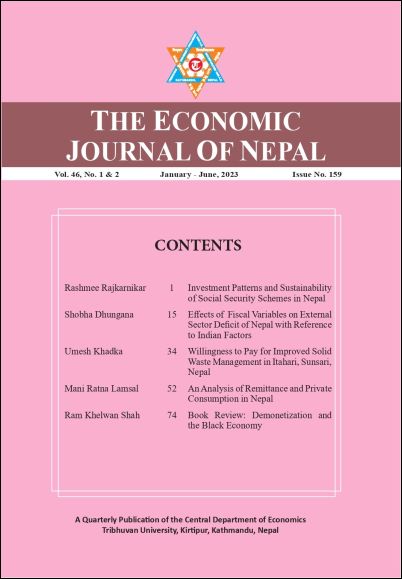Effects of Fiscal Variables on External Sector Deficit of Nepal with Reference to Indian Factors
DOI:
https://doi.org/10.3126/ejon.v46i1-2.68023Keywords:
Fiscal effects, Trade deficit, Current account deficit, Real exchange rate, Co-integrationAbstract
The basic intent of this paper is to examine the effects of fiscal variables on trade and the current account deficit of Nepal considering the Indian factors. Using the time series data of 48 years of the study period from 1975 to 2022, Engle-Granger’s co-integration and error correction models are used to examine the fiscal effects on the trade deficit, and the ARDL model is used to examine the effects on current account deficit. The basic variables used in the analysis are government expenditure to GDP ratio, budget deficit to GDP ratio, trade deficit to GDP ratio, broad money supply to GDP ratio, trade openness, real exchange rate, and real per-capita Indian GDP. Data are taken from the Ministry of Finance, Nepal Rastra Bank, and World Development Indicators. The findings show that the government expenditure to GDP ratio and trade openness positively affect the trade deficit as domestic factors, while real per-capita Indian GDP positively affects the trade deficit as an external factor. Also, the budget deficit to GDP ratio has a positive effect, while the broad money supply to GDP ratio has a negative effect on the current account deficit as domestic factors. The real exchange rate is negatively and real Indian per-capita GDP are positively driving the Nepal’s current account deficit as external factors. This study identifies the real exchange rate with Indian rupees, Indian real per-capita GDP, and financial development as novel explanatory variables of current account deficit and therefore provides additional evidence on external deficit in the context of Nepal.
Downloads
Downloads
Published
How to Cite
Issue
Section
License
© Cedecon-TU




